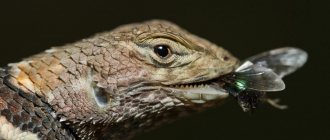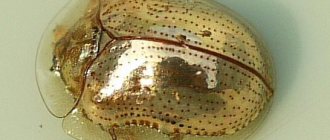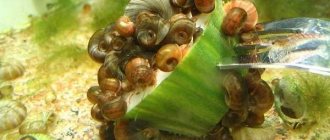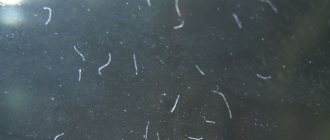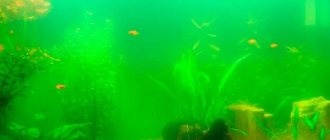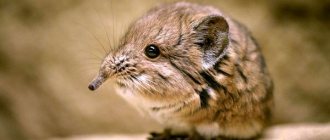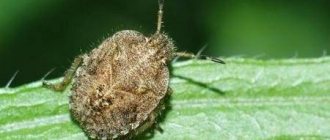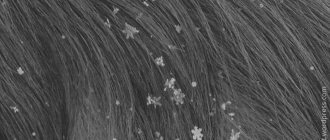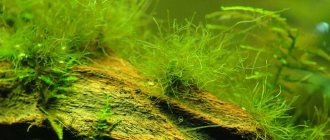Description of the slug clan
- Fact:
It is not so easy to detect the harmful guests themselves, but traces of their presence remain everywhere. - Fact 2:
They are awake at night, during the day they hide from the sun’s rays under the leaves of plants, and in the morning one can only lament the results of their feasts. - Fact 3:
Slugs are omnivores and do not disdain almost any plantings in the garden. - Fact 4:
Slugs have gained great popularity in the pet market.
An unpleasant, but familiar situation to many owners of personal plots: you go out in the morning to your caressed and well-groomed green “kingdom”, and it’s as if sloppy and impudent guests are running the show. The berries are bitten, the fruits are undermined, the vegetables are also damaged. And on top of that, all the berry, fruit and vegetable deliciousness is smeared with a nasty slimy coating. Congratulations! Your site was chosen by new residents whom you did not invite, but they came and had a good feast at night.
This is a common practice among slugs. They are awake at night, during the day they hide from the sun's rays under the leaves of plants, and in the morning one can only lament the results of their feasts. It is not so easy to detect the harmful guests themselves, but traces of their presence remain everywhere. These insects are omnivores and do not disdain almost any plantings in the garden. There are a huge number of varieties of slugs, but there are several species that are the most numerous and famous.
Garden slug
Another name for him is Naked. The elongated body of the slug is small (25-30 mm) and wet all the time, as it secretes lubricant (mucus) around the clock. He is also able to change the shape of his body by contracting his muscles. This species has an unremarkable, inconspicuous color:
- Grayish.
- Yellowish.
- Faded brown.
In the mouth there is a tongue with rows of many teeth, resembling a grater. In the front part of the body there are tentacles, and on them are organs of vision.
You can meet the garden slug throughout European territory. The diet includes any fruits, vegetables and berries, but they are especially loved:
- Tomatoes
- Strawberry
- Strawberries
- Cabbage.
The slug eats stems, leaves, and fruits. In the latter he makes holes and passages, the plants begin to rot and lose their marketable and aesthetic appearance.
It is most active if the weather is damp and gloomy, at night and in the pre-dawn morning hours. It hides from the burning rays of the sun under soil lumps, in lowlands with high humidity, in places shaded by plant leaves.
In areas where the humidity level is constantly high (near rivers and places where groundwater is on the very surface), they breed especially a lot. A female slug lays up to four hundred eggs at a time. After overwintering underground, young individuals come out with the arrival of spring.
Folk remedies
Folk remedies for fighting slugs have long been tested and are highly effective and do not harm plants or soil at all. Many of them do not even harm the mollusks themselves, but simply scare them away from planting and reliably protect plants from damage.
They must be used in conjunction with preventive measures - timely loosening, weeding, thinning of plantings, removal of weeds and plant debris from the site. Fighting slugs in the garden with folk remedies will help you safely expel the pests.
Plastic bottle traps
The principle of the trap is to pour some kvass, beer or fruit juice into a container. They are placed, covered to protect from rain, throughout the garden. Slugs and snails are attracted to the yeasty aroma and become trapped and either drown or die from alcohol poisoning.
You should take a plastic bottle and cut 2 square pockets in it with the letter P opposite each other. Then we bend these pieces of plastic down to create slides along which it will be convenient for slugs to climb inside to the bait.
This way, every morning the trap will be filled with slugs; after cleaning it, you can repeat the process again. It is very convenient to make an effective trap for slugs and snails by taking the most ordinary plastic two-liter bottle.
Wormwood infusion
Prepare an infusion for spraying plants:
- Take a kilogram of wormwood.
- Boil for 10-15 minutes in a small amount of water.
- The decoction is infused overnight.
- When the solution has cooled, add ten liters of water to it.
Helps well against slugs, which disappear after spraying in 2-3 days
Eggshell
Gardeners use eggshells to ward off slugs with relative success. You need to take hand-crushed shells, that is, medium-large fraction (about 0.5 by 0.5 cm), and pour them in a continuous dense layer around the beds.
The shell can become a barrier protection for plants against snails and slugs. Unfortunately, the effect only lasts for a couple of days. When the shell cakes and stops pricking the abdomen, slugs and snails perfectly overcome this obstacle.
Coffee against slugs
The easiest method is to use coffee powder. You can take the cheapest coffee powder and sprinkle it on the ground around the planted plants. Slugs and snails will stop climbing on them, since they will not want to overcome the barrier of spilled coffee - they will be scared off by the coffee aroma, and besides, the granules perfectly absorb the moisture produced by the slugs for movement, which is a mechanical barrier to their movements around the garden.
Ash from slugs and snails
Scattering lime or wood ash over the soil surface (and ash also over leaves) creates an unfavorable alkaline environment for slugs and snails and becomes an obstacle to their movement. Ash protection only has an effect in dry weather, or as long as the ash under the bush on the soil surface can remain dry. If the soil under the bush is damp, the ash quickly becomes soaked. Slugs are practically not afraid of wet ash, since it does not stick to their body. In rainy weather, the ash quickly gets wet and is washed into the soil, ceasing to act.
The width of the ash ring should be large enough. Ash has a greater effect in early and mid-summer, while the slugs are still small enough and it is easier to create a barrier. At the end of summer and autumn, when slugs become large and the weather is more humid, protection with ash becomes difficult.
You also need to take into account that in a hosta bush protected by an ash barrier there may already be slugs, which hide at the base of the bush during the day and may not leave the bush for many days. Therefore, in the evening in the dark, after ring barriers of ash have been created under the hostas, you need to walk with a flashlight and collect crawling slugs from the leaves. Otherwise, the slugs living in the bush, despite the fact that ash is scattered around, will continue to eat the bush.
Bentonite
Finely ground bentonite clay has long proven itself in organic farming as an alternative to fungicides and insecticides. Experience has shown that treating plants with bentonite minimizes damage from slugs and snails, as well as other pests.
Bentonite contains a large number of fine particles that have a high adsorption capacity; in particular, it adsorbs volatile substances that determine the smell of the plant. Pests that find the plants they need by a specific smell, after treatment with bentonite preparations, are deprived of their landmarks.
For the same reason, bentonite cannot be used during the flowering of fruit trees, as this will make it difficult for pollinating insects.
Bentonite makes plant integumentary tissue denser. This makes them less attractive to slugs. Also, spraying with a bentonite solution reduces the pH on the surface of foliage and trunks, and in a humid environment shifts the reaction to the alkaline side.
Straw, sawdust and pine needles
Try mulching the bed with chopped straw or sawdust. Slugs do not like rough surfaces. The products irritate and dehydrate the delicate bodies of slugs, making it difficult for them to move. Natural mulch made from hay, straw or sawdust should be sprinkled thickly on and around the beds.
Beer from slugs
Place containers of beer to the brim throughout the garden. The foamy drink is poured into half-liter jars, which are buried in the ground so that the edge of the container rises a couple of centimeters. Slugs crawl towards the intoxicating smell. Stupefied, they fall into beer and die.
Experienced gardeners and gardeners advise using dark beer. But there is no need to pour poison into beer traps, because it will also kill ground beetles, which also like beer. These beetles feed on slug eggs, so they are very helpful to people in the fight against them.
Vinegar and ammonia as a means of combating
Vinegar and ammonia are very effective remedies against slugs. Slugs die from table vinegar. To prepare the solution you will need a bucket of water and 65 ml of 9% vinegar. The solution is sprayed on the leaves of plants and watered over clusters of pests. A weak solution of ammonia should be sprayed on plants favored by slugs. When ammonia gets on the shellfish, it burns the skin.
Use with caution, only weak solutions, since these substances can burn the plants themselves. It is also recommended to water slug nesting areas with a weak solution of table vinegar. Never use vinegar essence! Remember that this is a very dangerous, toxic substance. Keep all pest control products away from children.
Use of polyethylene
This method of fighting slugs has received a lot of good reviews. Cellophane is spread directly on the surface of the ground between the beds. In the morning, with the first rays of the sun, slugs will hide under it. All that remains is to lift the polyethylene and collect all the pests. Pests crawl under it at night, and during the day, when the sun begins to warm up, they die due to the high temperature under the film.
Mustard powder
Mustard seed powder in the country will successfully replace dozens of chemicals. It is effective, cheap, accessible, environmentally friendly, safe for people and animals. The voracious slugs will not go away completely, but we can prevent them from getting to the greenery in the beds if we periodically dust the row spacing or the top layer of mulching material with mustard powder. Mustard will burn the delicate skin of the slugs, and they will prefer to eat elsewhere. A spicy additive will enhance the effect - ground hot pepper and powdered wood ash. Everything is in proportions 1:1:1.
Fruit baits
Slugs love citrus fruits, especially grapefruits, the peels of which can be used to make a wonderful trap. To do this, cut the grapefruit in half and remove (eat it yourself) the pulp of the fruit. Make a hole in each half, place it on a flat surface like a dome and leave overnight. In the morning, your enemies will gather under the peel, and you can easily get rid of them.
naked slug
This is not a very large representative of the slug family, 60-70 mm, and the most ardent supporter of vegetable gardens and gardens. It is this species that is most common on farmland . It eats absolutely any plantings. His menu of preferences includes more than 160 cultures. The slug's appearance is inconspicuous. The body may have a brownish, grayish or beige tint with white or yellow splashes.
This species secretes a lot of mucus to lubricate the body, much more than other species. Its secretions are so abundant that slimy paths remain in the places where the slug crawls. The naked species is widespread throughout Europe, due to its great fertility.
Sense organs [ edit | edit code ]
Like snails, most of the slugs' sensory receptors are concentrated around the head. Nerve nodes, or ganglia, process information received by two pairs of tentacles. The lower, shorter pair are sensory tentacles that are used as an organ of smell, touch and possibly taste. The upper, longer pair are the tentacles of vision (or optical tentacles), sensitive to light and odors. Although slugs cannot distinguish colors, they can easily distinguish light from dark.
Slugs have 100 - 5000 photosensitive cells, each surrounded by many pigment cells. There are a large number of microvilli on the surface of photosensitive cells. It is believed that these are the light-sensitive areas of these cells. The lobes of the mouth can act as an organ of touch, distinguishing between different surfaces. When a slug loses one of its tentacles, it grows back. For example, in representatives of the species Arion ater
it takes 1-2 months.
From the head, nerves run along the entire body, both to the leg to control movement and to the digestive system.
Netted slug
This mollusk is small, up to 30 mm, and is colored quite specifically. The main background is beige, with a mesh pattern of thin dark stripes drawn across it. The mesh is especially pronounced on the dorsal part and mantle. The tentacles are usually monochromatic and black.
They inhabit the territory of Eastern Europe, including the Russian Federation and the CIS. It does not favor forests, nor areas with lush shrub vegetation, but garbage dumps, fields, meadows, and vegetable gardens are just right for it . The mesh type is called the most harmful. Its activity leads to significant crop losses, especially in cabbage plantations. It renders the heads of cabbage completely unusable due to numerous gnawed internal passages. If the summer is rainy, it may invade winter crops.
Internal structure
On the back, under the skin of the mollusk, a shell is visible, which, like all other slugs, is highly reduced. The shell is white in color, shaped like an oblong oval, its length is 13 mm and its width is 7 mm. It is assumed that healing substances are stored there. This shell has been known since ancient times and was used for medicinal purposes.
The leopard slug's digestive system consists of the radula, pharynx, esophagus and intestines. In the intestines, four sections are connected to the liver, while the other two simply hang freely inside the body.
At first glance, this slug resembles a very simple creature, but it has a nervous system that consists of ganglia. Each ganglion has its own place: the pedal ganglion lies under the radula, the abdominal ganglion is slightly to the right of the midline, and the visceral ganglia are located in the middle between the esophagus and the uvular membrane.
Great European slug
This species is one of the largest. The mollusk can grow up to 15 cm in length. In addition, the European slug has an extraordinary appearance: its coloring is similar to that of a cheetah, the same light background and black spots.
The big slug is lazy as hell. He really doesn't like movement and changes in his habitat . Having settled in a greenhouse or cellar, he will spend the rest of his life there. He is unpretentious in his food preferences and eats everything. whatever comes to hand, including mushrooms and roots.
Interesting Facts
Do you know which animal on the planet ranks first among the toothy ones? This is probably very interesting to every person. Although surprisingly, the toothiest creature that is not a predator is the large roadside slug. There are approximately 30 thousand teeth on his tongue! This grater tongue helps the slug grind all the foods it feeds on and make large holes in them.
We can conclude that among the toothy individuals there are not only large predators, but also mollusks, which are among the smallest representatives of the animal world.
Orange (brown) slug
It is considered medium-sized, 70-80 mm. It has an orange, rusty or brown body with folds and wrinkles. But the mantle, which occupies a third of the body, is smooth. This variety is adapted to cold weather, therefore it inhabits the European north and all regions of Siberia, choosing forests of any type (coniferous, mixed, deciduous). Sometimes it is found in the territories of old cemeteries, where there are a lot of tree plantings or unimproved park areas.
Nocturnal, awake from sunset to dawn. It feeds on carrion, rotten roots, mushrooms, and fallen leaves. In garden plots located near forests, it will definitely find a place to destroy plantings of cabbage, lettuce and other vegetable crops.
Large roadside (leopard) slug
One of the larger species. Wrinkled, rounded body up to 200 mm long with a pointed rear end. The background color is light, from pale gray to ash chestnut, with black spots, like a leopard.
The homeland of the roadside mollusk is Europe, especially its Central and Northwestern parts . The main feature of the species is its unusual mating method. Sexually mature individuals are attached to a tree or any support with the help of the same irreplaceable mucus, formed into a thick, strong rope. On such a “swing” slugs hang as if floating in the air.
Red triangle slug
This fellow belongs to the exotic species. Its homeland is Eastern Australia. Its appearance is quite different from other species:
- There are only 2 tentacles on the body (the others have 4).
- Bright, noticeable color (pale pink, white, red, olive, cream).
- A clear purple robe in the shape of a triangle.
The dimensions are large enough to examine the mollusk carefully, 14-15 cm. Like all slugs, it loves moisture and settles in the shady bushes of gardens and forests. Very often he strives to get into a residential building, or rather, a bathroom. It lives there, feeding on mold. In the wild, it is capable of eating lichens on trees, especially eucalyptus trunks.
Natural enemies of slugs
Photo: What a slug looks like
Slugs have many natural predators. However, due to various reasons, their enemies are disappearing in many areas. This is one of the main reasons why slug populations are booming. Particularly industrious predators of slugs are various types of insects (for example, beetles and flies). Many beetles and their larvae often feed on slugs. For example, ground beetles love to eat slugs. They are also a major food source for fireflies and lightning bugs.
Hedgehogs, toads, lizards and songbirds depend on insects for their survival. They are also natural enemies of slugs, but cannot live by feeding on them alone. Since insect species are endangered or already extinct in many areas, slugs can exist there undisturbed. Declining insect populations have become increasingly devastating since the introduction of artificial pesticides into agriculture and horticulture.
It is worth refraining from using pesticides, because otherwise you are helping the natural enemies of slugs to take up residence in your garden. Slug pellets also contain pesticides - so-called molluscicides, which harm not only slugs and snails, but also their natural predators.
Thus, the natural enemies of slugs are:
- ground beetles;
- hedgehogs;
- centipedes;
- toads;
- newts;
- frogs;
- lizards;
- leopard slugs;
- Roman snails;
- worms;
- shrews;
- mole;
- fireflies;
- snakes;
- possums.
Great spotted slug
It grows up to 13 cm in length and is completely covered with small black dots on the mantle. The oval body is decorated with longitudinal dark stripes. The creature is quite thermophilic, so it prefers to live in southern European regions and the territory of Asia. In areas with colder climates it can live exclusively in greenhouses and greenhouses. Loves to eat mushrooms (champignons are a special love) and various vegetables.
Since it has a considerable size, it causes no small harm. The life expectancy for a mollusk is impressive - 3-4 years .
banana slug
It is enormous in size, only slightly inferior to the giant representative, as much as 25 cm. A distinctive feature of the banana clam is its color . Bright, yellow (less often green or white), plain. Only sometimes with dark dorsal markings. The upper horns are equipped with visual organs, and the lower ones with olfactory organs.
The banana species inhabits North America, from Alaska to the Pacific coast. Despite the name, the slug does not eat bananas, but mushrooms, rotting grass, lichens and animal excrement. Changes color depending on the composition of the diet.
Upon fertilization, the female lays up to 75 eggs, which overwinter in a dark, damp place. Adults are also dormant during periods of dry climate and high temperatures. Regularly releasing lubricant prevents the mollusk from drying out during hibernation.
Chemical methods
If the gastropod population is too large and other methods do not work, chemicals are used. Shellfish are sensitive to metaldehyde. Several drugs have been developed based on it. The most commonly used is “Slug Eater”, which comes in the form of powder and small granules. The smell of the product attracts shellfish. After eating it for a short time, the pests die.
Lime traps
To kill snails (slugs), sprinkle the surface of the soil with freshly slaked lime powder. Sprinkling the soil with lime is carried out in 2 steps within an interval of 10-15 minutes. During the first sprinkling, the snail protects itself from lime by secreting mucus, but with the second sprinkling, the snail is no longer able to secrete mucus, turns black and dies. By sprinkling the soil with lime in this way for two days in a row, in the morning, you can completely destroy all the snails.
Big black slug
This is the largest mollusk from the slug family existing on the planet. The length of its body is 30 cm. According to the name, this species is coal-black, with a black mantle, only along the edges with a small inclusion of small light dots. The lower part (sole) is two-tone: black center and gray sides.
The black giant's homeland is Europe (mainly Central and Western). In the northern parts it can only survive in greenhouse conditions . Egg laying up to 100 eggs.
The diet is mushroom, don’t mind eating vegetables. If there is no usual food, it is capable of eating lichens. Gigantic size means a corresponding appetite. Therefore, the damage from the mollusk is colossal.
Where does the slug live?
Photo: Yellow slug
Slugs need to live in moist, dark habitats or homes. Their bodies are moist, but they can dry out if they do not have a humid habitat. Slugs are usually found in areas that people have created, such as gardens and sheds. They can be found anywhere in the world as long as their habitat is moist and cool.
You're probably more familiar with garden varieties of slugs and snails, but gastropods have diversified to colonize most habitats on the planet, from forests to deserts and from the highest mountains to the deepest rivers.
Britain is home to the world's largest slug, Limax cinereoniger. Found in southern and western forests, it reaches 30 cm when fully grown. There are around 30 species of slugs in Britain and, contrary to popular belief, most cause little damage in the garden. Some of them are even useful, because they feed mainly on rotting vegetation. There are only four species that do all the damage, so it's good to learn to recognize those few bad slugs.
Fun fact: Unlike snails, slugs do not live in fresh water. Sea slugs evolved separately, also losing their ancestral shells.
Some species, such as the field slug, live on the surface, crawling through plants. Others, such as the garden slug, also attack underground, with potatoes and tulip bulbs being particularly popular.
A staggering 95% of slugs in the garden live out of sight, underground, at any given time, and this is why completely organic plug nematode control methods are quickly gaining popularity among gardeners. One type of nematode is a natural parasite that also lives underground.
forest slug
Interesting representative. During the biological cycle it reaches 15 cm, and is able to reproduce at only 3 cm in length. Young animals have a chestnut color, which changes as they grow older. The older generation has a wide range of colors: from milky to anthracite.
Eats everything: mushrooms, carrion, plants, both living and rotting . Great Britain, Germany and Ireland have included the forest slug in the Red Book due to the small number of the species. The general distribution area is extensive:
- British Isles.
- Northern Europe.
- Pacific Northwest Coast.
Common mistakes: what not to use
The first instinct is always to place traps and bait where slug and snail damage is most severe and where the plants are most valuable. But be careful. The enticing scent will attract slugs from all over your garden, and along the way to the desired treat are delicious, succulent plants that just need protection.
Plants are sprayed with a solution of mustard powder early in the morning, in the evening after sunset or in cloudy weather, because in bright sunshine the moisture quickly evaporates, and the mustard remaining on the leaves can cause burns.
Red slug
A bright colorful representative of mollusks, ranging in size from 10 to 18 cm. It can be a rich brick color, yellow, green, black. In almost all countries of its habitat it is listed in the Red Book as a rare species. Distribution area:
- All parts of Europe except Northern.
- North America.
It always coexists with humans, populating fields, orchards, and vegetable gardens. Sometimes lives in forest areas, but only near human presence.
Smooth slug
A small mollusk, only 2.5 cm. The cylindrical body with tapered ends is always one color: brown, black, red. Resident of the European part of the continent, including the CIS territories. Loves marshy areas or the proximity of bodies of water of any origin. It is more moisture-loving than other species and is adapted to cold weather.
In the wild, it eats mushrooms, rotting plants, and berries; it is dangerous to humans due to its proximity due to its addiction to greenhouse crops, which it greatly harms.
Red roadside slug
The people call it Spanish or Lusitanian. Quite by accident it was brought to the territory of Russia . The main habitat is European regions with a warm climate; Spain and Portugal are considered their homeland. The dimensions of the wrinkled body are average - 90-110 mm, rarely growing up to 200 mm.
The main color is uniform, including the color of the mantle. They come in orange, red, brick. The red species is hermaphrodite, and very fertile. During mating, mutual fertilization occurs, on the 5-6th day oviposition of 350-400 eggs occurs, after 14-15 days the appearance of new individuals. They become sexually mature after a couple of months.
They eat any vegetation: berries, fruits, flowers, vegetables, mushrooms.
Field slug
A small mollusk 3-4 cm in size, with a nondescript, inconspicuous color: from pale gray to faded chestnut. The fusiform body is narrowed at the ends. Inhabits all of Europe along forest edges and meadow lowlands with the obligatory humidity of the territory. A frequent visitor to gardens, fields and orchards.
My favorite delicacy is strawberries. From the rest of the diet: young shoots of plants, vegetables, fruits, foliage.
Economic importance. Damage caused
For nature, slugs bring some benefit, being orderlies. They are able to process leaves that have fallen from trees, turning them into humus. But most of all, these mollusks, including the large roadside slug, cause quite significant damage to agriculture.
These voracious creatures cause especially great harm to potatoes by eating the tubers and foliage of the plant. Cauliflower and white cabbage, various varieties of lettuce, root vegetables, young vegetable plants, as well as strawberries, tomatoes and cucumbers suffer from slug invasion. Vineyards and entire citrus plantations are affected by this pest.
The large roadside slug causes much less damage to the following crops:
- Red cabbage.
- Parsley roots and leaves.
- Onion and garlic.
- Crops of barley and oats.
Spring wheat, flax and buckwheat almost do not feel the invasion of slugs. In addition to the fact that mollusks voraciously destroy agricultural crops, they are also carriers of fungal and viral diseases. Among these pests is the large roadside slug. The description of these diseases, which include cabbage spot, potato late blight and downy mildew, makes it possible to once again verify the harmfulness of the slug. In this regard, the question arises: how can you get rid of such a nasty enemy?
Cabbage slug
With relatively small sizes (30-40 mm), they cause great damage to cabbage plantings. Having settled inside the head of cabbage, the mollusk begins to gnaw the passages up and down, not limiting itself to just damaging the outer leaf. The color of the body and mantle is the same, brown or brown, dark spots of different sizes are possible without a clear color transition. The color of the horns and head is slightly darker than the body.
Habitat throughout Europe, except for the northernmost regions. The deficiency of your favorite cabbage as food is successfully compensated for by mushrooms, vegetables and leaves.
Slugs as a pet and other benefits
Yes, yes, imagine that the fashion for keeping exotic pets has not bypassed this mollusk. Slugs have gained great popularity in the pet market . These horned creatures live in apartments as pets and even appear as characters in computer toys and works of art. For example, there is the game “Royal Slug in Terriac,” and in the books about the famous Harry Potter, the Horned Slug is used to make a magic potion.
This is how it happened that the enemy of gardeners and gardeners became loved by people far from hobbies of plant growing. And yet, the slug is a pest, although sometimes quite attractive in appearance and unusual in size.
Manual collection
If there are only a few shellfish, you can try to collect them by hand and then destroy them - for example, in a concentrated saline solution or vinegar. The most effective method is to collect by hand late in the evening at dusk or early in the morning (when slugs are active) and destroy the slugs using a shovel or some other sharp object or by placing them in a 10% solution of table salt for one day.
The Spanish slug uses dead or wounded fellow species as food. Therefore, dead slugs can be left to attract other individuals in a certain place, but in this case this place must be re-examined. If slugs are destroyed before July, they should be buried in the ground. If slugs are destroyed in August or September, in order to prevent their eggs from entering the environment and the further spread of this species, dead slugs must be burned or placed in a solution of table salt.

